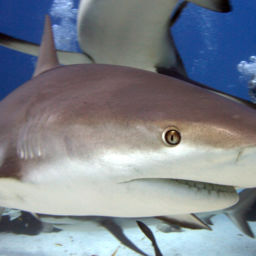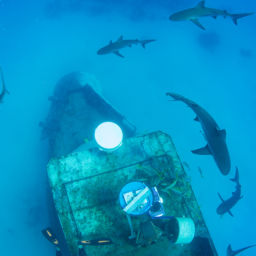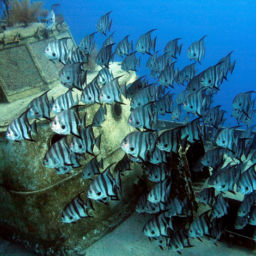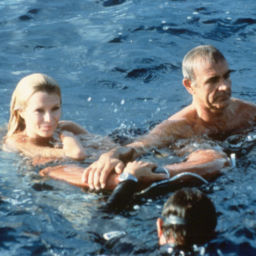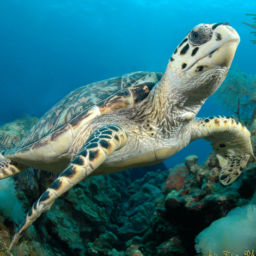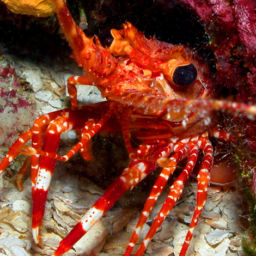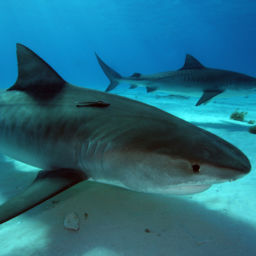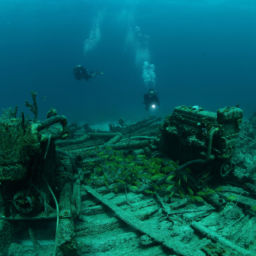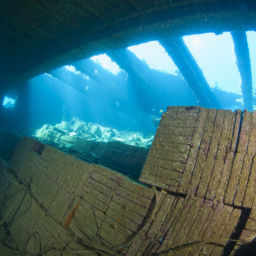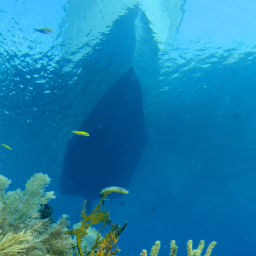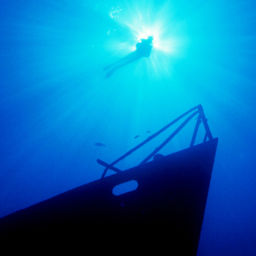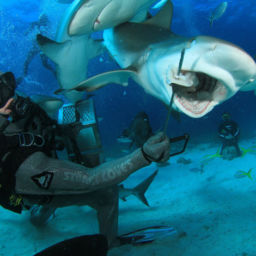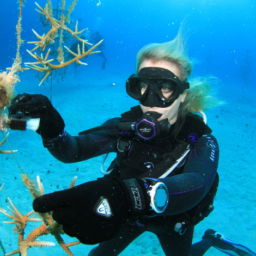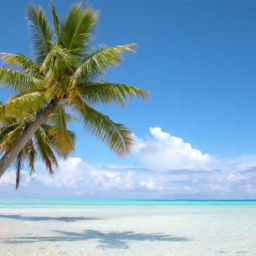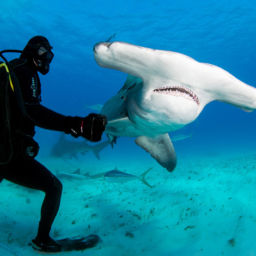If you’re dreaming of an archetypal tropical paradise, the fantasy in your mind’s eye will probably look a lot like the Bahamas. From tiki huts suspended over aquamarine waters to balmy evenings, cheap rum, and long, lazy days, the Bahamas really is a beach-lover’s dream come true. If the delights of island living aren’t enough to charm you, then the underwater sights should be. It’s no coincidence that so many film producers choose to shoot underwater scenes in the Bahamas. Thanks to the islands’ gin-clear sea, warm water and shallow, sun-dappled reefs and wrecks, visiting many of the Bahamas’ dive sites is equivalent to visiting a submerged Universal Studios. New Providence Island in particular is a hotspot for film aficionados who want to see where their favorite movie was shot, with dive sites like the Hollywood Bowl providing a tangible link to the scenes from the silver screen. The most exciting of these dive sites for me — perhaps because of my British heritage — were the Tears of Allah and the Vulcan bomber wrecks, known collectively as the James Bond Wrecks. Divers can see both sites on a single dive, with a maximum depth of 45 feet at the deepest point on the Tears of Allah.
Accessed by a short boat ride, the James Bond wrecks dive typically begins on the deeper of the two sites, the Tears of Allah. In a past life, this 92-foot tug was used as a supply boat before being sold to the producers of the James Bond film Never Say Never Again. It was deliberately sunk for use during the shooting of that film, which was released in 1983 as a remake of an earlier Bond film, Thunderball. Both movies starred Sean Connery as James Bond, and today the Tears of Allah makes for an uncomplicated and rewarding wreck dive with crystal clear visibility. Because it is so shallow, it’s accessible to divers of all certification levels; significant current is also rare. The tug provides an excellent opportunity for wide-angle photography, its upright position making for beautifully atmospheric images. A favorite shot for visitors to this wreck is through the gaping “torpedo” hole in its side; for those with the appropriate qualifications, it’s possible to penetrate the wreck and admire the impressive coral adorning its interior. However, because the wrecks sit on a seafloor comprised of fine white sand, it’s important to keep finning to a minimum and maintain proper buoyancy to avoid stirring up the substrate and reducing the visibility.
Just a 2-minute swim from the bow of the Tears of Allah lies the wreck of a Vulcan bomber mockup, constructed out of fiberglass for the original Thunderball movie. The exterior panels have long since disintegrated, and all that’s left of the plane is the metal framework, looking for all the world like the Little Mermaid’s jungle gym. The bars and struts of the wreckage provide a base for a wild profusion of corals, from sea fans to sponges and the vibrant, but dangerous, fire coral. Since their glory days serving as film props, both wrecks have become a haven for a wonderful array of marine life, from colonies of beautiful, but invasive, lionfish to turtles, barracuda and shoals of Technicolor reef fish. On clear days, these wrecks are visible to snorkelers on the surface, making a visit to New Providence’s James Bond Wrecks a possibility for just about everyone. I dived with the well-known Bahamas dive center, Stuart Cove’s, which was both professional and knowledgeable. If you’re thinking of exploring the Hollywood relics scattered around this area of the Bahamas, this is an excellent place to start.
- Average water temperature: 80 F (26 C)
- Visibility: 50 to 130 feet (15 to 40 meters)
- When to go: Year-round
- For more information: www.stuartcove.com


